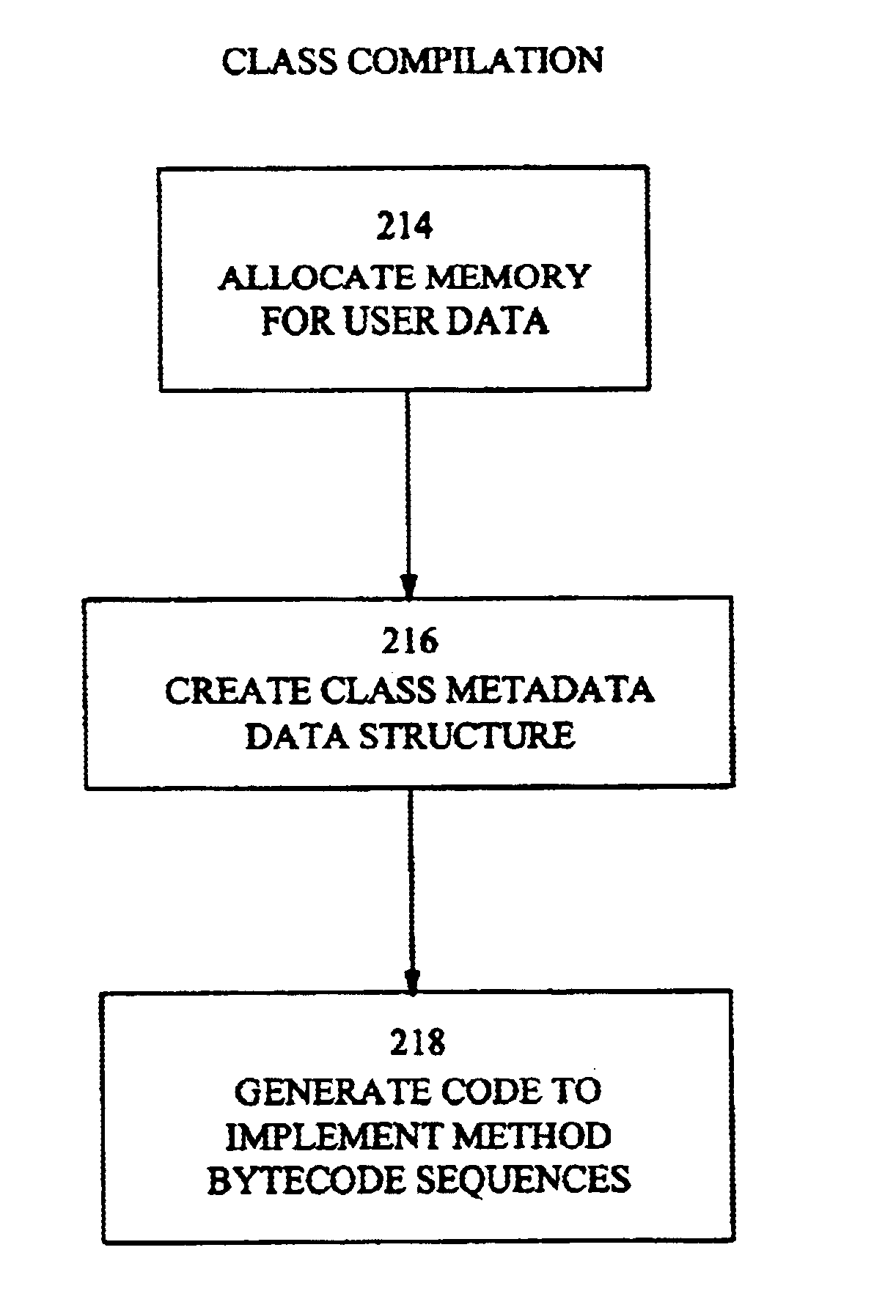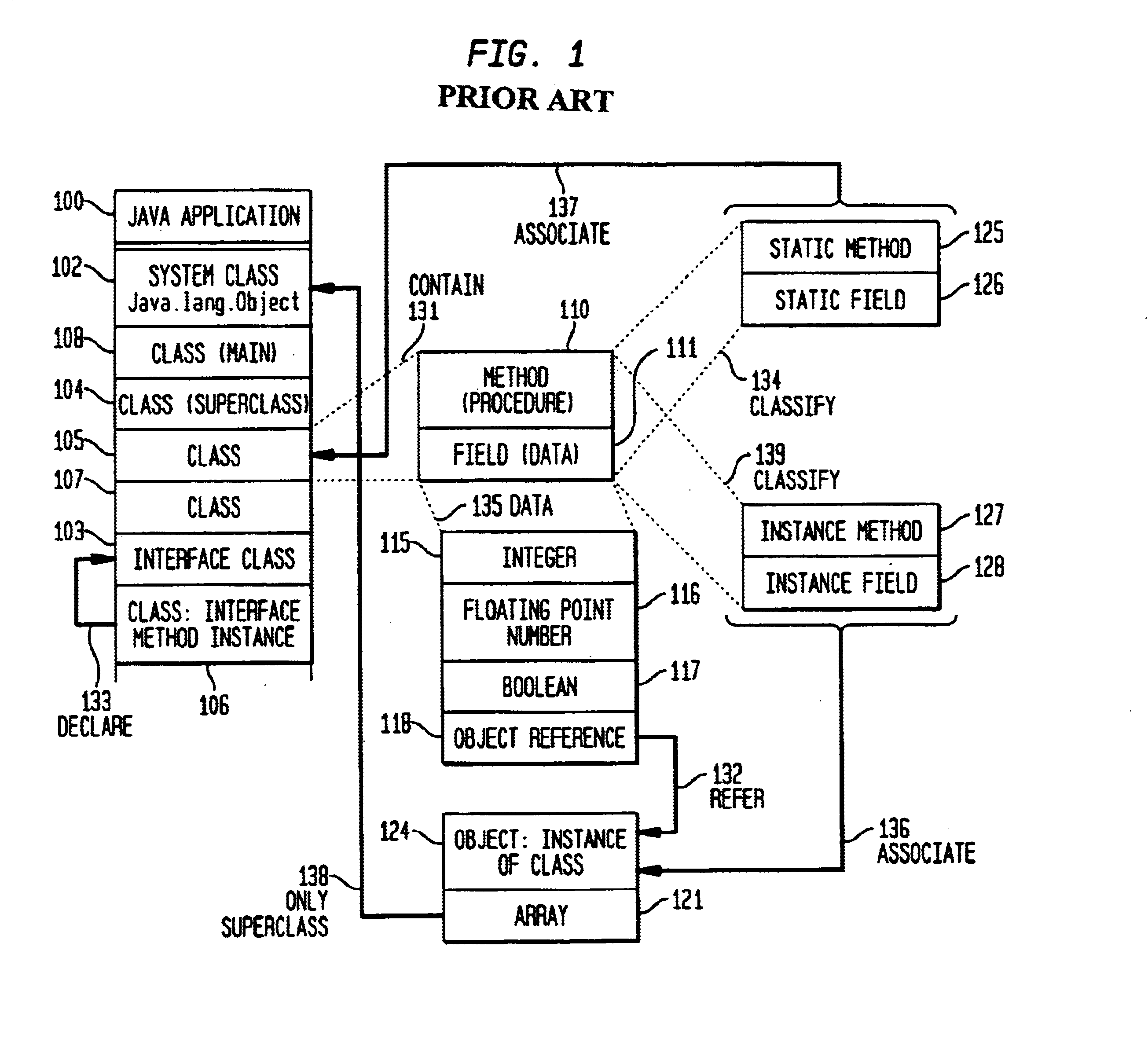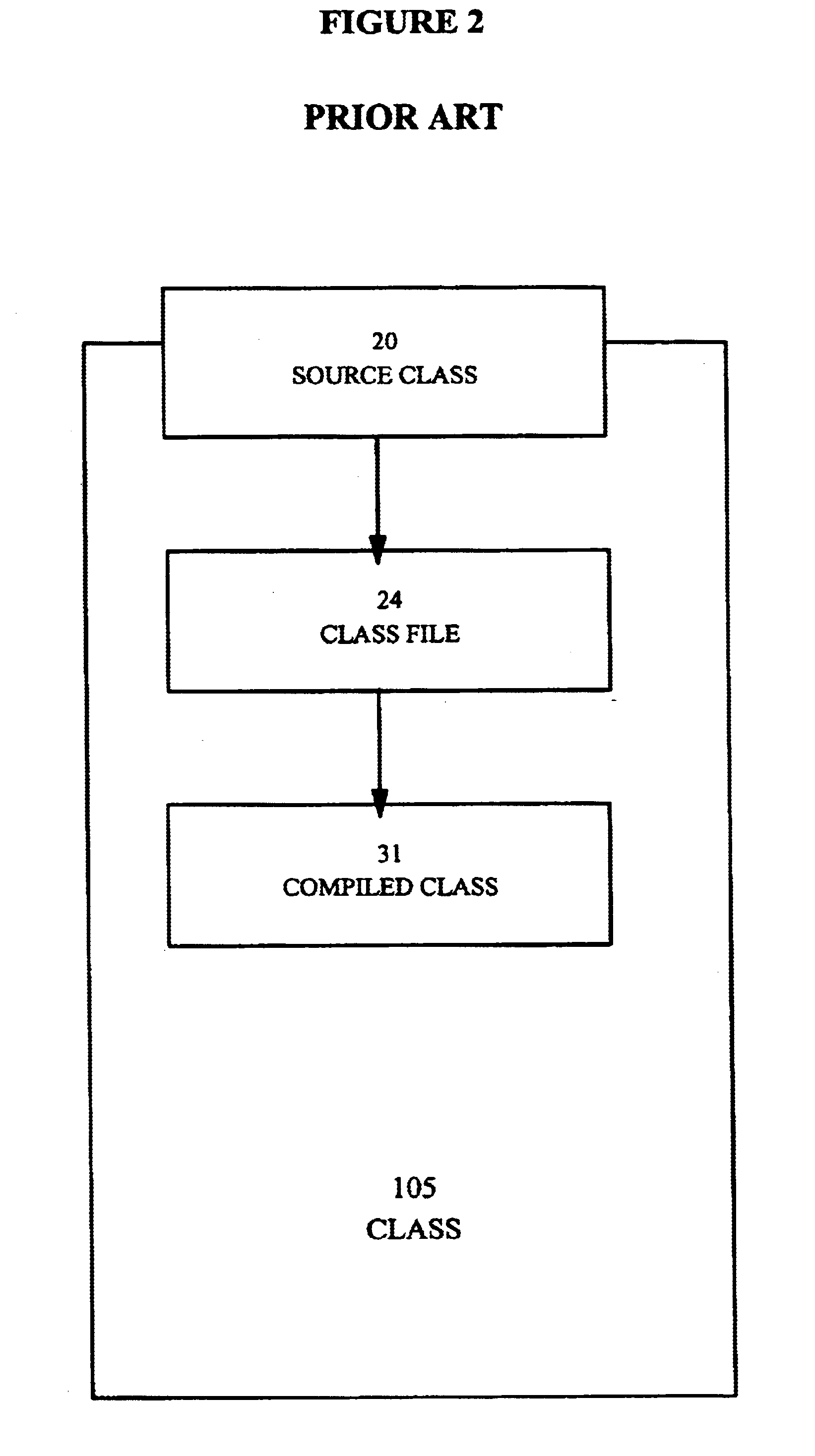System and method for detecting release-to-release binary compatibility in compiled object code
a technology of object code and detection system, applied in the field of object oriented language implementation, can solve the problems of significant performance cost, incompatibility of binary code, and implementation impose a considerable performance penalty on the application, and introduce an extra level of indirection to implement full rrbc at a significant performance cos
- Summary
- Abstract
- Description
- Claims
- Application Information
AI Technical Summary
Benefits of technology
Problems solved by technology
Method used
Image
Examples
Embodiment Construction
The following description of the preferred embodiment of the invention includes the following parts:
1. Object Oriented Programming in Java: an overview of how Java applications are traditionally built and executed, including an overview of the Java language features that are relevant to this invention.
2. Static Compilation of Java using HPC: an overview of how users build Java applications using HPC, including a description of some internal run time data structures that are relevant to this invention.
3. Execution of Java Applications Built Using HPC: an overview of how users execute Java applications built using HPC, including a description of how the HPC run time system loads, initializes and executes an application.
4. Release-to-Release Binary Compatibility in Java Virtual Machines: an overview of how RRBC works in a Java virtual machine and how this presents a problem to HPC.
5. How the RRBC Problem is Handled in HPC: a detailed description of the preferred embodiment of the inven...
PUM
 Login to View More
Login to View More Abstract
Description
Claims
Application Information
 Login to View More
Login to View More - R&D
- Intellectual Property
- Life Sciences
- Materials
- Tech Scout
- Unparalleled Data Quality
- Higher Quality Content
- 60% Fewer Hallucinations
Browse by: Latest US Patents, China's latest patents, Technical Efficacy Thesaurus, Application Domain, Technology Topic, Popular Technical Reports.
© 2025 PatSnap. All rights reserved.Legal|Privacy policy|Modern Slavery Act Transparency Statement|Sitemap|About US| Contact US: help@patsnap.com



